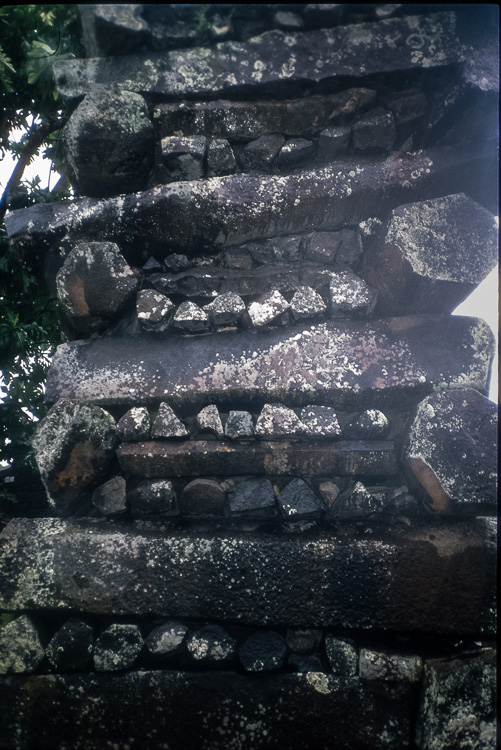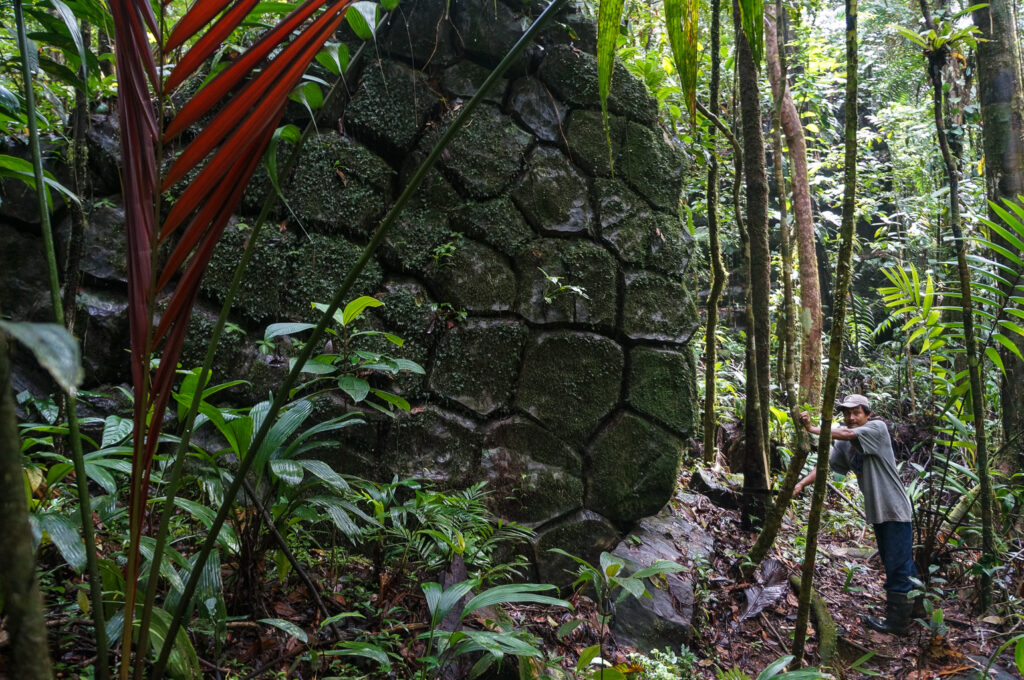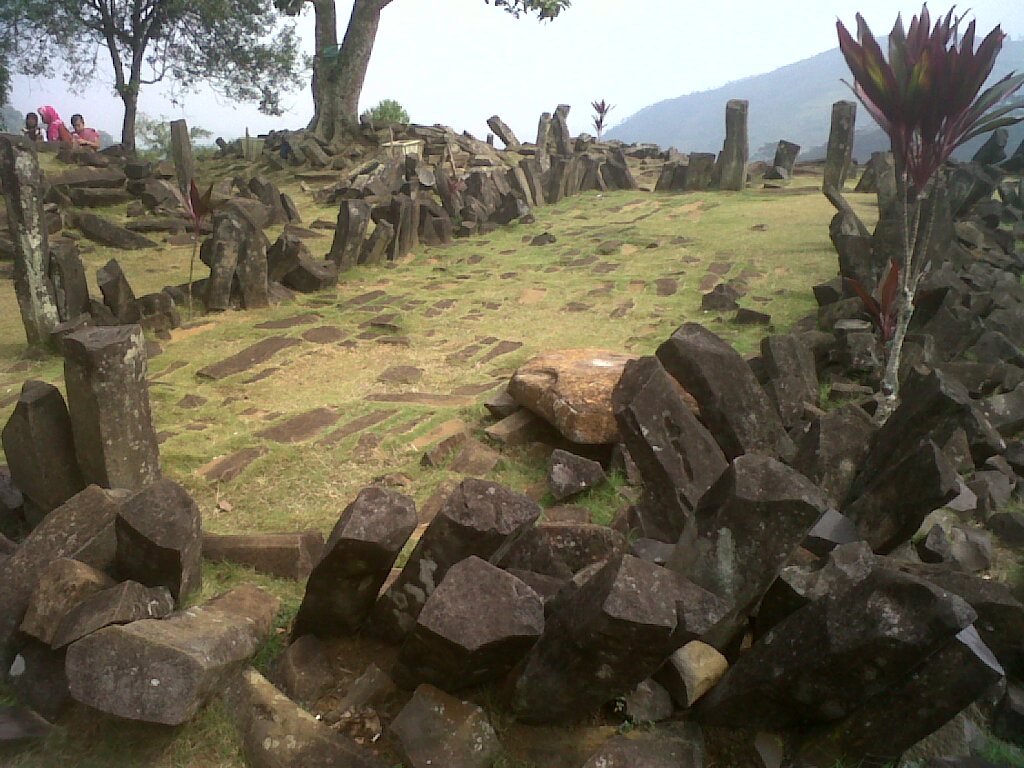TLDR; the construction methods at Canta Gallo and Nan Madol are very similar and quite unique – it is a good guess that the same people were the driving force for both.
Nan Madol has walls built like this:

Canta Gallo has walls and pyramids built like this (pic source):

Yes, the volcanic nature of the rocks – columnar basalt – is behind the similar shapes of the lengths of rock used. And such rocks, although quite unusual, can be found in numerous places around the world. But there are only three examples globally, each in remote places, of it being used as a building material. The third is Gunung Padang in Indonesia, which has a massive pyramid that is perhaps very ancient.

Canta Gallo is in Nicaragua and the only example, so far, of pyramids in that country. There may be many more as this location, which has at least 10 pyramids, was only discovered in 1998. There is very little information about it online.
Bluish gray stone slabs are piled up to form huge stone balls and pyramids that might be over 20 meters in height. The Rama told us that these structures are known to date back from 3000 to 5000 years.
I have always been intrigued by Nan Madol, because it is so unique, in such a remote location. If it was made or influenced by ancient mysterious elders who roamed the world, providing knowledge, then the question has to be – why?
Why build such enormous structures, and presumably at great effort and cost? If the purpose was religious – everything in antiquity was related to rituals, archaeologists tell us – then surely something smaller would suffice. If the same “elders” made or inspired these, then at least we know that big was important, hence the pyramids around the globe.
Nan Madol is on the remote island of Pohnpei, part of Micronesia, and home to only 36,000 people. It is 4300 kilometres from Taiwan and 1600 kilometres away from Guam. Not only is it small (334 km2) and remote, it is also one of the wettest (rainiest) places on Earth. In other words, hard to find and not appealing. Possibly it had value as a place to stop for food, something that is plentiful in the lush surroundings.
Nan Madol itself is an archipelago of 92 artificial islands made from rock and coral.
Carbon dating indicates that megalithic construction at Nan Madol began around AD 1180 when large basalt stones were taken from a volcanic plug on the opposite side of Pohnpei. The earliest settlement on Pohnpei was probably around AD 1 although radiocarbon dating shows human activity starting around AD 80–200
Wikipedia makes it clear that the ruling Saudeleur dynasty behind the construction of Nan Madol were not fellow Pacific islanders, and not very nice:
Pohnpeian legend recounts that the Saudeleur rulers were of foreign origin, and that their appearance was quite different from native Pohnpeians. The Saudeleur centralized form of absolute rule is characterized in Pohnpeian legend as becoming increasingly oppressive over several generations. Arbitrary and onerous demands, as well as a reputation for offending Pohnpeian deities, sowed resentment among Pohnpeians.
Worship and construction seemed to be the purpose of the missionaries. Many aspects of their rule are useful in understanding what they elders were like across their various global missions, because this one was thankfully recent enough (1100 – 1200 to 1528) and localised enough for the stories to be more reliable.
- The two original foreigners (men) were known as sorcerers who could levitate rocks. More likely the construction process was kept secret, and myths created.
- They arrived in a “large canoe” which suggests the type of craft was not seen as unusual
- There was a sequence of singular leaders, all of whom descended from the original sorcerers and their local brides.
- Sometimes the locals assassinated a leader, but a replacement always emerged
- A foreign god was rejected by the locals. The worship was towards existing local gods
- Different leaders had different styles. Some were benevolent and liberal
- One introduced the First Fruits custom, which also occurs in many major religions, where priests get the first produce from the annual harvest
“According to legend, the rulers of the Saudeleur Dynasty were never concerned with military affairs, and the era is generally characterized as peaceful, though native Pohnpeians suffered and grew dissatisfied with the administration” – which makes sense. When mysterious elders arrived anywhere in the world, they were few in number, and used knowledge and sorcery to win people over. They were not interested in anything military, and seemingly dominating with wealth and power was not important, but religion was. And while they may have preferred that people worshiped the gods of the elders, if that did not take then local gods continued to be worshipped. The who was not important, but the doing was.
A big question is whether religion was a means to an end – megalithic construction – or whether it was important on its own as well. I am guessing that the megaliths mattered most.
